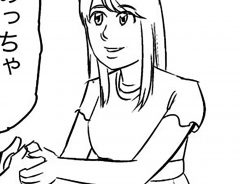- Tags:
- bande dessinee / Manga
Related Article
-

Full Details of Highly Anticipated Anime “DEVILMAN crybaby” Revealed
-

Watch a Japanese Artist Turn His Manga Story to an Anime in an Ingenious Way
-

First Full Ghost In The Shell Trailer Gives Stylish Full Look At Film’s World And Characters
-

Japanese CG Crime Reenactment Maker App Released, Hilarity on Twitter Ensues
-

Japanese idol’s handshake event has life-changing impact on zealous fan [manga]
-

Here’s Alphonse Elric In The Live-Action Fullmetal Alchemist Movie



Bande dessinée, or BD for short, is the term used for comics that originated from France or Belgium. They might not be as well-known as their American or Japanese counterparts, but if you’re a fan of visual storytelling, it won’t be hard to appreciate the alluring charm of BDs.
BDs, in their earliest form, started in the early 1900s when they were published as a part of newspapers and magazines. As certain artists and series rose in popularity, ‘comic books’ dedicated to BDs started being published.
But just as the art form started to become more established, the early 1940s saw an abrupt halt to the production of BDs. Their publication was restricted during the Second World War, and BD magazines at the time struggled to survive.
Fortunately, the decades following the war saw their urgent renewal, and this was when we saw more of the breakout series that remain popular to this day, titles like Tintin, Asterix and The Smurfs.
Modern BDs are now very diversified. Even during their early years, artists were picking up influences not just from France or Belgium, but from all over Europe. This, in addition to the fact that the majority of BDs are published in full color, allowed artists to add another layer of depth to their storytelling.
In terms of its reach in regions like Japan, because of the dominance of their native manga comics, you’d be hard-pressed to find BD series translated into Japanese. However, this changed with the arrival of 2021, when we saw the release of Japan’s first ever bande dessinée magazine, called ‘Euromanga’.
© PR Times, Inc.
Euromanga is an electronic magazine that focuses on distributing BDs translated into Japanese. Their first issue has 350 pages and features 10 different series broken up into different volumes. The first series, which was also featured in the magazine cover above, is based on Homer’s Odyssey and features the Greek mythological figure, Telemachus as its central character.
The other series that were hand-picked for the first issue are not just diverse in art styles, but also in their settings.
Among the many settings featured are Portugal (‘Portugal’ by Cyril Pedrosa), New York in the 1950’s (‘Blacksad’ by Juan Díaz Canales & Juanjo Guarnido), France under German occupation (‘The Reprieve’ by Jean-Pierre Gibrat) and a post-apocalyptic Paris (‘Aster of Pan’ by Merwan). One BD doesn’t even take place in any version of earth, but instead in a colony found in outer space (‘Shangri-La’ by Mathieu Bablet).
© PR Times, Inc.
© PR Times, Inc.
© PR Times, Inc.
© PR Times, Inc.
© PR Times, Inc.
The other BD series also cover a variety of universal human emotions, such as nostalgia from family summer outings in Zidrou’s ‘Glorious Summers’, dreams and sisterly connection in Jérôme Hamon’s ‘Emma and Violette’, passion and love through a revolution in Emmanuel Lepage’s ‘Muchacho’, and love born out of unexpected circumstances in Angela Vianello’s ‘Wake up! Aeon’.
© PR Times, Inc.
© PR Times, Inc.
© PR Times, Inc.
© PR Times, Inc.
You can visit Euromanga’s Japanese website to get a copy of their first issue for 800 yen or purchase digital copies of other standalone BD series that have been translated into Japanese.